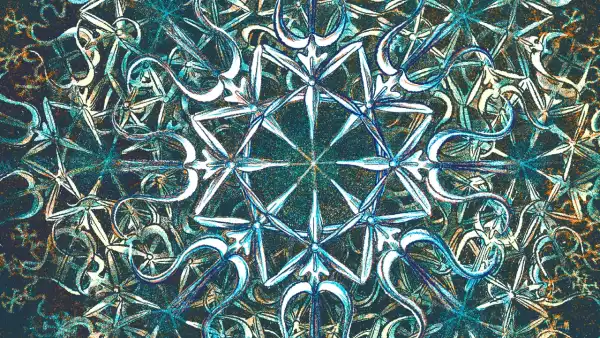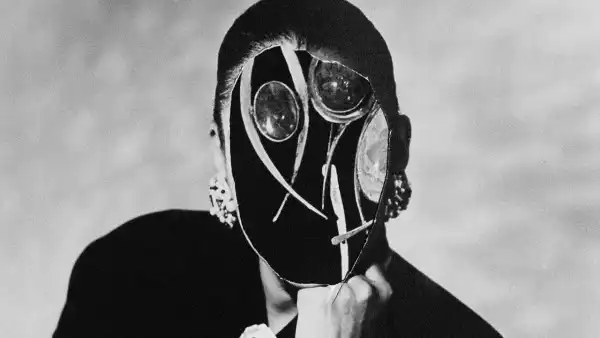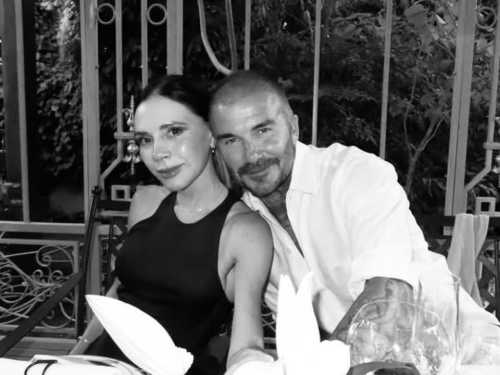
Save this storySave this storySave this storySave this story
Have you ever been without reading material while flying? It once occurred to me, and as I rummaged through the seat pocket to see if something might catch my eye, I discovered a narrative that would captivate me for many years to come. A prior traveler had left behind a barely-day-old copy of the Miami Herald nestled between the safety instructions and the motion-sickness bag. As I casually browsed through it, I came upon a piece concerning a local horticulturist named John Laroche and three Seminole individuals who had been taken into custody for taking rare orchids from a Florida wetland. It was just a snippet of a piece, yet it piqued my curiosity, seeing the words “wetland,” “orchids,” “Seminoles,” “plant cloning,” and “criminal” all linked. I journeyed to Miami for the initial court appearance in the case and published “Orchid Fever” in The New Yorker in January 1995.
Certain narratives conclude when they are over: they offer a fleeting, enjoyable journey that feels whole and accomplished. However, I couldn’t dismiss the orchid piece. I couldn’t dismiss it even when Laroche informed me that he had abandoned the world of botany and started an occupation in online adult entertainment. I was confident that it could be a book. I went back to Florida and persisted with the piece for an additional three years, eventually releasing it as “The Orchid Thief” in 1998.
The producer and filmmaker Jonathan Demme had been interested in securing the rights to “Orchid Fever” upon its release. I was stunned. The piece was so peculiar and advanced at such a leisurely pace that I couldn’t imagine it as a film. In any case, I was unwilling for a film to be produced prior to the book, thus I stated I would only relinquish the rights if he agreed to wait. He did, and I took his offer. Once the book was finalized, my representative, Richard Pine, delivered copies to Demme and Ed Saxon, his producing partner. Demme had originally intended to direct, yet he passed the directing role to Spike Jonze, who was then primarily known for creating music videos. Charlie Kaufman, who had recently completed work on “Being John Malkovich,” would pen the screenplay. The notion that “The Orchid Thief” could transform into a Hollywood production continued to appear nonsensical to me. But why not relish chatting about it? Following the film team obtaining the book, several months went by without any communication, so I presumed the “Untitled Orchid Thief Project” would fail, like many other movies in their planning stages.
But that didn’t occur, and one day, over lunch in the Village, Ed provided me with a copy of Kaufman’s screenplay. “It deviates slightly from the book,” he informed me. “There are figures in the screenplay who aren’t in your book. But we’re quite enthusiastic about it and hope you enjoy it.” I headed back to my New Yorker workplace. I didn’t feel pressed to read the screenplay, but I took it from its envelope and glanced at the front page. To my dismay, it didn’t say “The Orchid Thief.” It read “Adaptation.” And it gave credit to two scriptwriters—Charlie and Donald Kaufman. O.K., Charlie Kaufman must have a sibling? I skimmed through a couple of pages and halted on a scene depicting me, as a child, alongside my parents. What? Another scene featured a made-up romantic entanglement between John Laroche and myself, which was not just mortifying but, if it were genuine, would have broken journalistic protocol. What I didn’t grasp at the time was that after struggling for a period on how to craft a film from material that lacked a clear narrative structure and without misrepresenting the essence of it, Kaufman had arrived at the concept of having a fabricated film coexist within a piece about the film’s creation. He felt he could genuinely honor the book while also wickedly portraying the Hollywood system, which would have intended to spice up the piece with intimacy, narcotics, and drama. He spared no one: his self-depiction, as a clumsy, complaining artist who masturbates to my author image for inspiration, is maybe the most savage depiction of all.
I had believed the screenplay would revolve around Laroche. I was unwilling to appear as a persona in a film in any capacity, and certainly not as I was represented in Kaufman’s screenplay. I voiced my anxiety to Ed, and stated that, at the very least, they shouldn’t employ my real name. He responded by stating that all the other actual individuals portrayed had consented to being named—including, seemingly, my parents, whom he had already reached out to. He also made the most persuasive point: since the book itself is a persona in the film, would I truly desire someone else—Nancy Jones? Jennifer Stevens?—to be named as its author, even fictitiously? My ego smarted at the idea. I stated that I would consider it. I sought my friends’ advice, and they all recommended that I not sign onto the film. And then, I don’t know what occurred, but I had a change of heart. I started to feel as though I had been presented with a ticket for a very strange carnival ride, one that I might later rue not taking. That was my usual disposition in life—the urge to consent even when I was uncertain of the effects. I recall signing the release document and thinking how humorous life can be.
I didn’t pay strict attention to what was occurring with “Adaptation,” since I was busy with my personal work and, honestly, I didn’t anticipate much to result from it besides the usual Hollywood chatter. I was taken aback when Ed invited me to his production workplaces to brainstorm potential actors. This made the film appear more tangible than I had envisioned. The producers were primarily interested in who I envisioned playing me. I drew a blank. “Red hair!” one stated. “Julianne Moore!” Another stated, “Jodie Foster”—fair hair, yet she could dye it. We joked around for a bit. It seemed like a parlor game, naming actors, as if that was all it took to summon them into your film. Ultimately, someone stated, “Meryl Streep.” What an absurd concept: the most respected female actor in the nation in this bizarre film.
As it turned out, I did share some history with Streep. In my second year of college, when I was back in Cleveland for the holidays, my friend Lisa inquired if I was willing to be an extra in a film being shot in the city. I had never heard of the filmmaker, and I believed that the title, “The Deer Hunter,” sounded silly. I also hadn’t heard of the actors in it, with the exception of Robert De Niro, who had recently appeared in “Taxi Driver.” But I didn’t have anything better to do, so I went along. For nearly six hours, in a Russian Orthodox cathedral in an old working-class Cleveland area, we acted as the guests at a wedding of the characters Steve (John Savage) and Angela (Rutanya Alda). The wedding party included Christopher Walken, John Cazale, and Streep. The scene was filmed and refilmed numerous times, which confused me, as I had never been on a film set previously. I imagined nothing would result from the film or anyone in it. Following its release, in 1978, “The Deer Hunter” garnered Oscars for Best Picture, Best Director, Best Film Editing, Best Sound, and, for Walken, Best Supporting Actor. It was neither the first—nor the last—time my predictions proved somewhat incorrect.
By the time “Adaptation” was cast, Meryl Streep was a dominant figure in Hollywood. The film diverged from anything she had done earlier, yet she informed me a few years later that her children had adored the screenplay and urged her to accept the role, which she did. Nicolas Cage was rumored to have interest in playing Charlie and his made-up twin, Donald. Several actors fought for a shot at playing the Kaufman siblings. While casting was proceeding, I happened to be at a film screening in New York, seated beside John Turturro. We greeted each other and made introductions. He recognized my name and started enthusiastically pitching me on why he should obtain the Charlie/Donald role. In the end, though, Cage landed the role—that is, the roles.
The most enjoyable aspect of the film’s preparation was the afternoon I spent with the movie’s costume designer, Casey Storm. He wished to see my garments so he could dress the fictional Susan Orlean in an appropriate manner. At the time, I favored vaguely goth concoctions. I encountered Casey at the doorway of my apartment clad in a Comme des Garçons dress—black wool with straps and buckles—dreaming that he might create something comparable for Streep to wear in the film. Throughout the following hour or so, I modelled my preferred outfits. However, at the conclusion of the afternoon, he informed me, “We need to make the journalist resemble a journalist.” In other words, he wouldn’t be utilizing any of my garments.
I believed I would at least confer with Streep so that she could analyze my mannerisms and adopt my Ohio accent. I tidied up my New Yorker workspace, anticipating a phone call any day announcing that she was en route. I mentioned it to colleagues at work—something along the lines of “Oh, Meryl Streep might be coming by, just in case you see a stranger wandering around,” and attempted to imagine which gestures of mine she might concentrate on. Time elapsed. More time elapsed. I eventually called Ed and inquired when Meryl was coming to see me. He informed me she didn’t need to, since she had already crafted the persona on her own.
Production on “Adaptation” commenced in 2001, and that spring, I was invited to participate as an extra. They would be filming a scene set in a grocery shop in which Charlie, played by Cage, observes two women conversing about how peculiar he appears. I was presented with the opportunity to be one of the chatterers. I was astonished when we arrived at the soundstage. My book had seemed like such a private undertaking—written in the secluded, at times somber quiet at my desk—but it had now bloomed into a mini metropolis, an industrial complex, with countless crew members bustling about, and a variety of vehicles, dressing-room trailers, and concession tables. Aside from that single day in Cleveland, this was the only occasion I’d been on a film set, and it was the first time I’d seen something of mine lifted from the page and into the three-dimensional made-up world.
My husband, John Gillespie, had flown to L.A. with me, and when we reached the set, a scene was being filmed in which Charlie meets with an executive. A number of individuals milled about, tidying the area, touching up Cage’s makeup. I noticed a petite figure with a cloud of curly hair standing a short distance from me: the actual Charlie Kaufman. I stammered and greeted him, adding, “This is somewhat embarrassing for me.” “It’s more embarrassing for me,” he replied, and hurried out the door. I don’t recall seeing him on set again throughout my remaining time in Los Angeles. Anyway, I was engrossed in my role as an extra; we filmed the scene, but it ended up being cut. Unexpectedly, John was enlisted as well, portraying David Remnick, the editor of The New Yorker, in a scene set in the magazine’s workplaces, faithfully replicated beneath the hot Hollywood skies. That one was also cut.
Once a rough cut of the film was prepared, I was invited to view it with a small group of individuals, including Spike Jonze’s mother and a French film distributor. En route to the screening, I started to panic. Why had I consented to this? Was it too late to retract my decision? I called my representative, who made it clear that it was definitely too late to change my mind. I sat through the screening in a daze. Did I appreciate the film? At the time, I couldn’t truly grasp it all. It was excessively lengthy, and none of the music had been incorporated yet, and the color hadn’t been adjusted. And seeing Meryl Streep, shown on a nine-foot screen, proclaim “I’m Susan Orlean” was an out-of-body experience.
I finally encountered her a few months later, at a screening of the finalized film in New York. Following its conclusion, I proceeded to the lobby and felt a hand on my shoulder: Meryl Streep. “Susan!” she shouted. “Will you forgive me?” We both chuckled at the absurdity of the moment. A few weeks prior to the official première, I had a second meeting with Kaufman, when “Adaptation” was nominated at the National Society of Film Critics awards. We were seated adjacent to each other at the awards dinner, and, after a few hesitant moments, we initiated a conversation. He was dry and elfish, self-effacing, and kind. The film was receiving some ecstatic early reviews, so his huge gamble—my huge gamble, too, in a different manner—seemed to be successful.
The official première took place in Los Angeles on December 3, 2002, at the old Mann Village Theatre in Westwood, close to U.C.L.A., with limousines, a red carpet, an after-party—all the extravagant Hollywood elements. The actual John Laroche was in attendance, as was the fictional one, who was portrayed by Chris Cooper (who subsequently garnered an Oscar for his depiction). Tilda Swinton, who portrayed an industry executive, was present, as was the real screenwriting instructor Robert McKee, who doesn’t feature in the book but is significant in the film, and Brian Cox, who portrayed him. I was confronted with a question that is uncommon for a journalist: What does one wear on a red carpet? I ended up selecting a Jean Paul Gaultier gauze top and skirt in tones of green and blue, embellished with a bedazzled image of what resembled a Renaissance saint.
The film had evolved from the disordered, illogical iteration I’d initially seen into a hilarious, astute, contemplative work of art. I desired to freshen up prior to the lights coming on at the end, so I reached into my purse and anxiously applied a myriad layers of lipstick in the dark. Without realizing it, I had coated my lips with a vivid, angry purple. I don’t recall ever acquiring such a lipstick. I only noticed it and wiped it off an hour later, when I caught sight of myself in a mirror. Regrettably, I had been strutting around looking clownish until then.
The celebration was held near the theater, at the Hammer Museum. The crowd was dominated by Hollywood faces; it was as if the movie industry couldn’t resist a film that made such devilish mockery of it. At one juncture, I was standing at a table with Tilda Swinton, Brian Cox, John Laroche, and Marianne Leone, Chris Cooper’s spouse. It was thrilling and enjoyable, and surreal. The following evening, when the film opened to the public, Charlie, Spike, and I arranged to meet, and we went from theater to theater in Los Angeles, standing at the back to assess the audience reaction. When we detected laughter at the appropriate moments, we departed and drove to the next showing. A newspaper article about the film had inquired, “Was there ever a bestseller less likely to make it to the screen?” but the answer, thus far, appeared to be that it was successful.
As “Adaptation” entered the world, I marveled at the contrast between publishing a book and releasing a movie. The cultural influence of a film is so powerful and far-reaching that it can practically overshadow the relevance of the book it’s based on. Certain readers of mine despised the movie and were incensed that I had authorized “The Orchid Thief” to be adapted in such a manner. My retort was to remind them that nothing in the book had been altered, irrespective of what the film had done with it. I also gained numerous new readers who had never been aware of the book but were intrigued after viewing the film—certainly a net positive. Having a book optioned is often viewed as evidence of the work’s worth rather than evidence that a filmmaker detects something in it that could succeed on the screen. Poor books have been transformed into exceptional movies, and numerous exceptional books have been mangled on the screen. They are entities that are linked but distinct, siblings that share DNA, yet each pursues its own path.
Being a character in a movie means—what does it mean? I’ve never formulated a neat response. It was odd, it was perplexing, it was anxiety-inducing, it was enjoyable, it was wonderful. It resembled riding in the sidecar of a swift motorcycle. We regard books as beautiful and meaningful and significant and profound, but we regard movies as dreamlike. Being a persona onscreen transports you eternally into another, more enchanted realm. ♦
This is extracted from “Joyride: A Memoir.”
Sourse: newyorker.com






